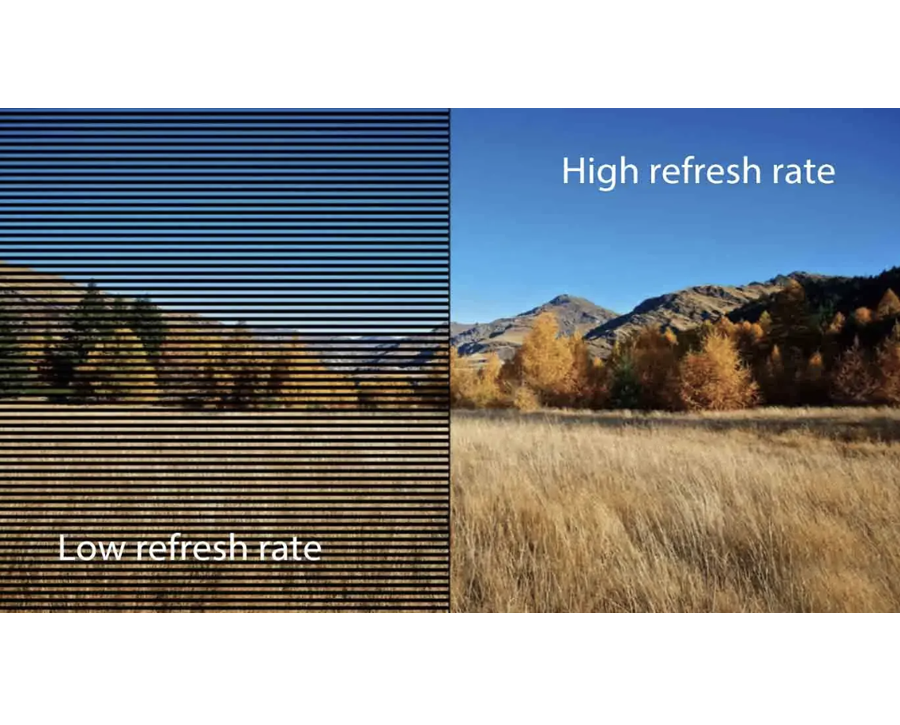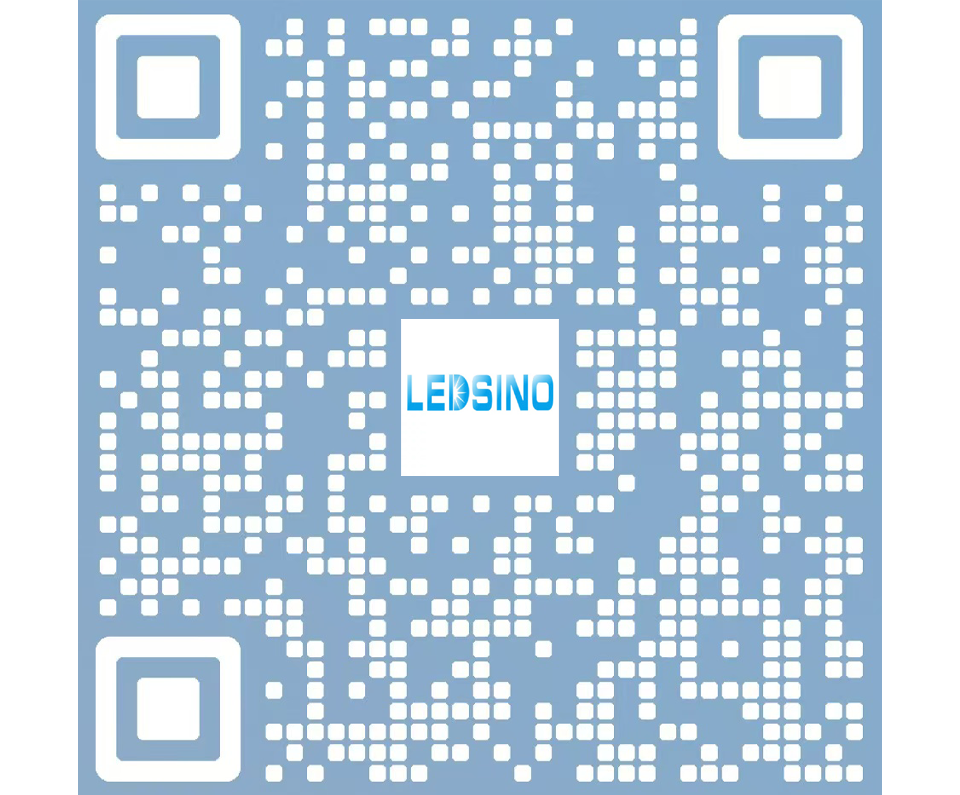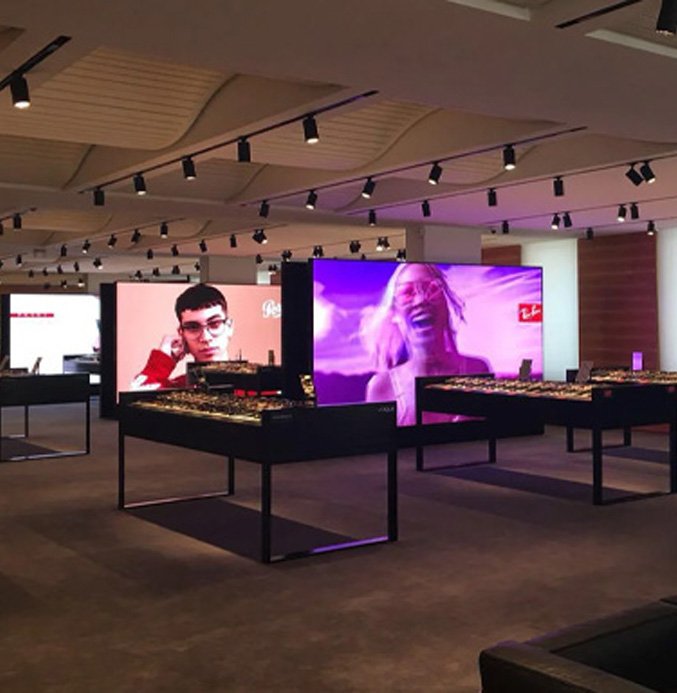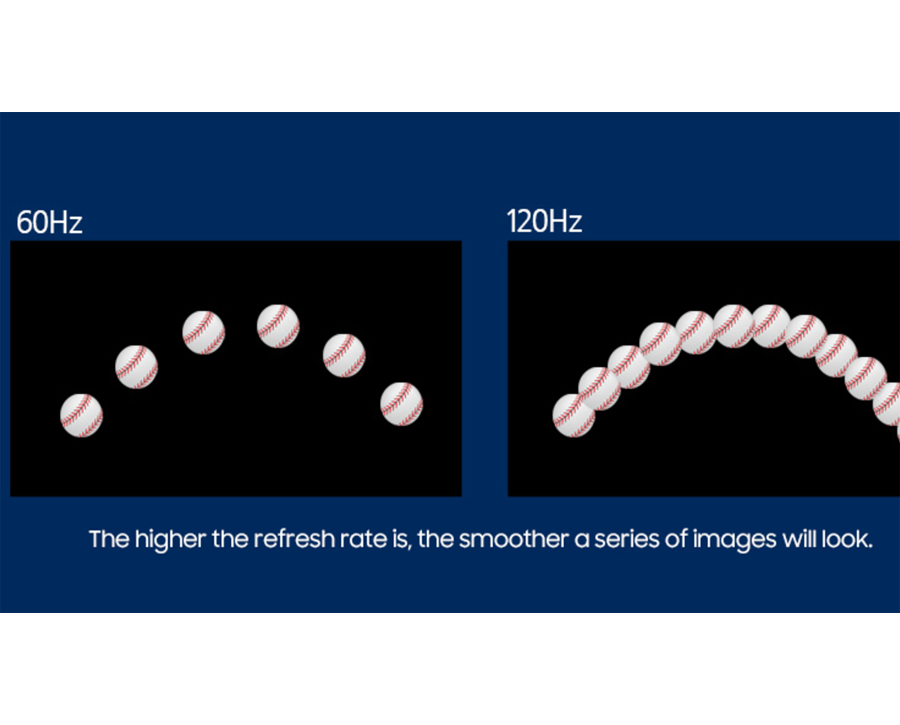
Screen refresh rates are essential in day-to-day screen experience. Learning more about refresh rates can allow a better view and more comfortable outlook on display. This article is a detailed description of things one needs to know concerning refresh rates in the year 2025.
What are Screen Refresh Rates?
Refresh rate of a screen is defined as the number of times that your display starts to refresh the image it displays per second. This is normally measured in Hertz . For example, today’s manufacturer’s screen has a 60 Hz refresh rate, and it means that the display jumped visually and changed what it displays 60 times per second. The higher the refresh rate. The smoother the movement and transitions on the screen.
Refresh rates are how your screen works. It is responsible for the clarity and fluidity of any moving image on your display. With a low refresh rate, this can introduce noticeable choppiness or flickering. But with a high refresh rate, it offers smooth and seamless visuals. That difference in smoothness becomes very apparent in fast-moving objects or animation, such as in playing video games or action movies.
Refresh rates, first and foremost, have everything to do with the pixels in your display. These are tiny dots that make up images on your screen by coming together. During refresh, these pixels are updated to make up a new image. The faster this is done, the smoother transitions would appear.
Refresh rates are important. But not only for smoothness. They also affect user experience considerably. A higher refresh rate cuts down on motion blur, allowing moving images to become sharper. This can increase your enjoyment and performance while playing fast-action video games, viewing sports, or even just scrolling through web pages.
Why Are Refresh Rates Important?
Refresh rates are important because they decide how well your screen can handle different activities. The requirements vary with the task at hand.
For gamers, high refresh rates are all the more important. Most games involve rapid movements and split-second decisions.
A higher refresh rate is equally useful when it comes to video editing. You need clear visibility of transitions and motions while working with the footage for precise edits. Which you can get by having a display with a refresh rate value of 60 Hz or higher.
This normally ranges from 60 Hz for casual use and streaming videos. Since most video contents are produced at 24, 30, or 60 frames per second. A 60 Hz screen can handle it pretty well. However, upgrading to a higher refresh rate can enhance the experience. Particularly when scrolling through content or watching action-packed scenes.
Refresh rates also impact your comfort while using the screen. Besides that, refresh rates can reduce latency. Latency is the time difference between an action. Clicking a mouse-and when the screen shows what happened. A higher refresh rate minimizes this delay, making your screen feel more responsive. This is helpful for tasks requiring precision and speed, such as gaming or editing.
How Refresh Rates Work
To understand how refresh rates work. You need to know how your screen creates and displays images. A screen is made up of a grid of pixels . These pixels change colors to form the images you see. The refresh rate determines how often these pixels update per second.
Each refresh serves to update the image. Even if the content on the screen hasn’t changed. This is what makes transitions smooth and motion blur low.
Static refresh rates run at a fixed speed. If your screen is set to 60 Hz. It will refresh at this rate regardless of the frame rate of the content. It’s good enough for almost all purposes, but creates some problems, such as screen tearing. Screen tearing occurs when the screen does not refresh at the same frequency as the frame rate of a particular content. You sometimes see parts of various frames all at once. Thus, a jagged or split image.
Where the process becomes somewhat more complicated, is when thinking in terms of dynamic refresh rates-enabled adaptive sync technologies. Enabling technologies such as NVIDIA G-Sync and AMD FreeSync on a graphics card will let your monitor’s refresh rate change depending on the content’s frame rate to avoid any screen tearing and/or stuttering. For instance, if your game ran at 90 FPS, adaptive sync dialed in your screen according to 90 Hz refresh.
Another common problem is stuttering, where the frame rate drops below the refresh rate. It causes the visuals to be choppy. High refresh rates minimize this with more frames shown per second in order to smooth out the motion.
Refresh rates also interact with your GPU. The GPU generates the frames that show up on your screen. So, if your GPU can’t produce the frames fast enough. It doesn’t matter how high your refresh rate is. It won’t provide good performance. This really brings out the balance in the refresh rates with other components of the hardware.
Optimal Refresh Rates for Different Use Cases
As we have seen, the best refresh rate is a function of the type of work that you are going to do on your screen and your needs.
High refresh rates are conveniently effective in rendering motion blur-free displays. Faster frame rates and lower latency rates to enhance gamers’ responsiveness and effectiveness during the game.
In general, for professional work like video editing or graphic designing, 60 Hz and above is quite enough. However, a higher refresh rate can enhance your workflow with even smoother visuals. If you want more fluidity. Consider a display with 75 Hz or 120 Hz for even better smoothness when scrolling and transition fluidity.
Refresh rates also interact with resolution. However, running both at maximum requires a powerful GPU. Make sure your hardware can keep up with a high refresh rate and resolution before upgrading.
How to Choose a Display Based on Refresh Rate
The proper selection of a display would entail several steps. First, identify the main purpose of use. Are you into gaming, professional, or just casual? Gamers will want high refresh rates while professionals and casual users can make their choice based on the needs that best suit them.
Next, consider your budget. High refresh rate displays can be expensive. Especially if they include advanced features like HDR or high resolutions.
Check your hardware compatibility . A high refresh rate display requires a GPU that can output frames at the same rate. If your GPU is outdated or underpowered. You won’t be able to take full advantage of a high refresh rate. Research your GPU’s capabilities and ensure it matches your chosen display.
Check the resolution. Higher refresh rates will only benefit those who are also upgrading their resolutions to high levels. Remember, a better experience will involve higher refresh rates and resolution.
Give thought to future-proofing. Advancements in display technologies happen rapidly. Therefore, investing in a high refresh rate screen ensures the setup will be relevant for several years to come. Consider such features as adaptive sync that allows for an enhanced performance from your screen over time.
If possible, test the display. Go to a store and compare refresh rates side by side.
Conclusion
Refresh rates are very important factors of your display experience in 2025. From seamless visuals to making viewing more comfortable and fluid. By understanding how refresh rates work. You could enjoy the one that best suits your needs each and every day.

Enter the digital world with our advanced display technologies.




